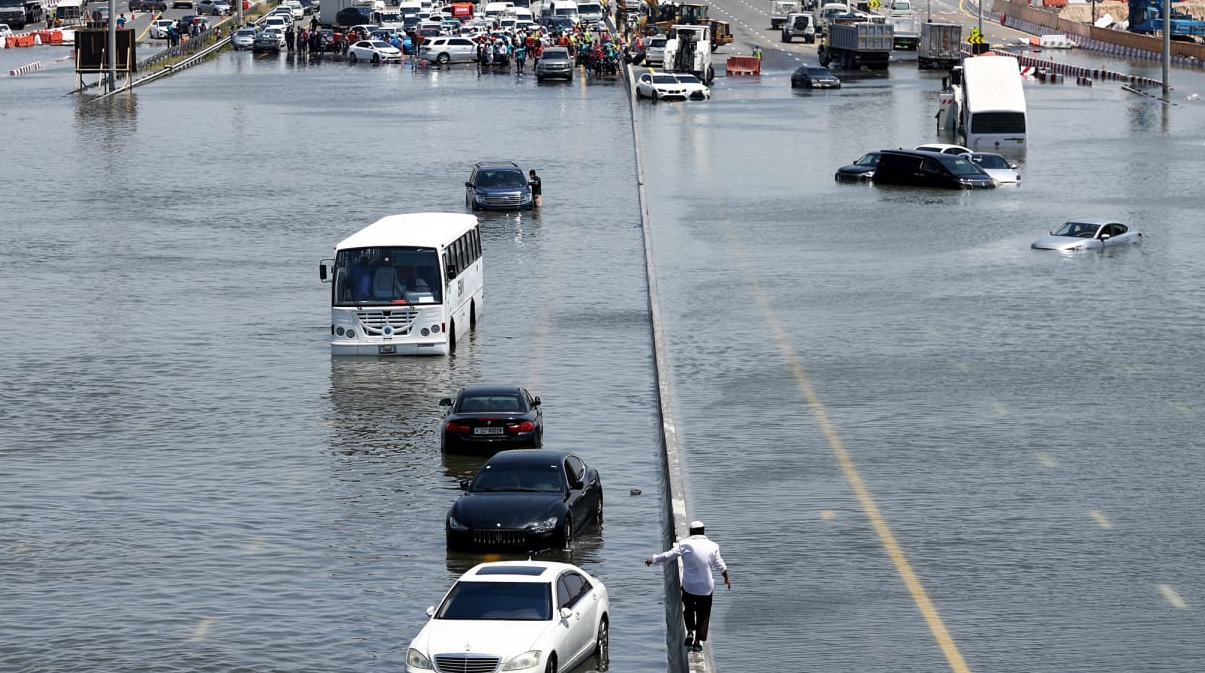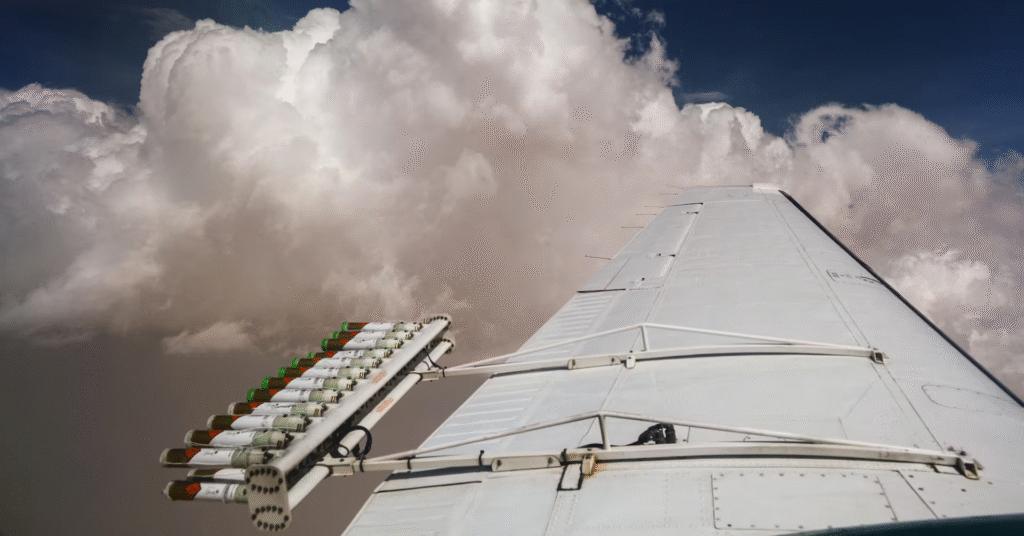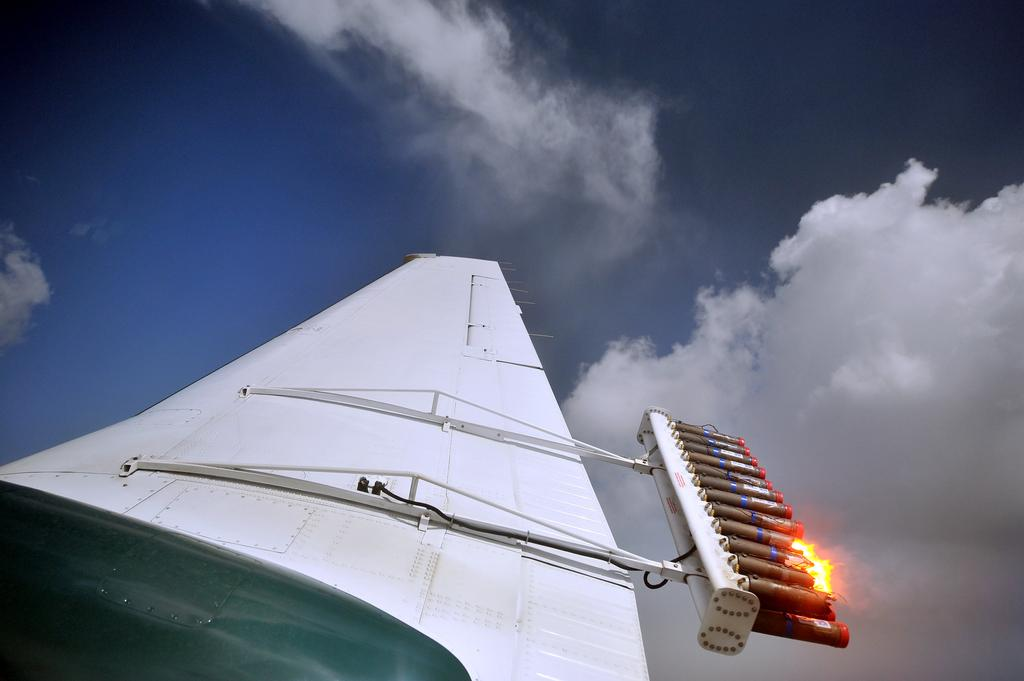Now Reading: UAE Makes It Rain: The Secret Science Behind Cloud Seeding 2026!
-
01
UAE Makes It Rain: The Secret Science Behind Cloud Seeding 2026!
UAE Makes It Rain: The Secret Science Behind Cloud Seeding 2026!

Table of Contents
The United Arab Emirates (UAE), famous for its vast deserts and dry climate, is using science to make rain. This technology, called cloud seeding, is helping the country tackle water shortages and boost rainfall. But what is cloud seeding? How does it work? And why is the UAE investing so much in it? Here’s everything you need to know.
What is Cloud Seeding?

Cloud seeding is a type of weather modification technology. Simply put, it helps make clouds produce rain. Scientists use small planes to sprinkle tiny particles, usually salt or silver iodide, into the clouds. These particles attract water vapor, making the droplets bigger and heavier until they fall as rain.
The process does not create new clouds but helps existing clouds produce more rain than they normally would. This is especially useful in dry countries like the UAE, where natural rainfall is rare.
Why Does the UAE Need Cloud Seeding?
The UAE is located in the Middle East desert region, where the average yearly rainfall is very low—about 100 millimeters (4 inches) per year. This is not enough to meet the water needs of its growing population, which has crossed 10 million people in recent years.
The country uses desalination plants to turn seawater into drinking water, but this process is very expensive and energy-heavy. Cloud seeding offers a cheaper and faster way to get fresh water, especially for farming and filling reservoirs.
According to the National Center of Meteorology (NCM) in the UAE, cloud seeding can increase rainfall by up to 30% in a dry environment and by 15% in more humid areas.
How Does Cloud Seeding Work in UAE?
The UAE is one of the world’s leaders in cloud seeding. The country has its own team of trained pilots and meteorologists who watch the skies daily. When they see a suitable cloud forming, they send special aircraft loaded with seeding materials to the cloud.
These planes release salt crystals or other particles into the cloud, which encourages water droplets to combine and become heavy. The droplets then fall as artificial rain.
The UAE conducts around 250 cloud seeding missions every year, mainly during the summer months when natural rainfall is rare.
Benefits of Cloud Seeding in the UAE
- More Water Supply:
Cloud seeding helps to refill reservoirs and groundwater sources, which is very important in a desert country with limited natural water. - Support for Agriculture:
Farmers get more water for crops, reducing the cost of irrigation and helping the country grow more food locally. - Reduce Dust and Heat:
Extra rainfall can lower temperatures and reduce dust storms, which are common in the region and affect air quality. - Economic Savings:
Compared to building more desalination plants, cloud seeding is cheaper and faster.
Concerns and Challenges of Cloud Seeding
While cloud seeding has many benefits, there are some concerns:
- Unplanned Flooding:
In July 2022, some parts of the UAE experienced sudden floods after heavy rain from cloud seeding missions. This caused traffic jams and building damage in places like Sharjah and Dubai. - Environmental Impact:
Some experts worry that spreading chemicals like silver iodide could harm the environment over time. However, the UAE mostly uses salt, which is considered safer. - Effectiveness Debate:
Scientists around the world still debate whether cloud seeding always works. Not every seeding attempt results in rain, and the results are hard to measure.
What’s Next for UAE Cloud Seeding?
The UAE is not stopping here. In fact, the country has invested millions of dollars into new research projects to make cloud seeding more effective. In partnership with international experts and universities, the UAE hopes to develop new materials and better methods for weather control.
In 2021, the UAE even experimented with drones that send electric charges into clouds to encourage rain—another sign of the country’s strong push to use technology for water security.
Is Cloud Seeding the Future of Water in the Desert?

For now, cloud seeding looks like a promising solution for the UAE’s water problems. But experts agree that it is not the only answer. The country still needs to work on water conservation, recycling, and sustainable farming.
However, the success of cloud seeding shows that with science and innovation, even the driest places on Earth can make it rain.
Final Thoughts
As the global climate changes and water becomes a precious resource worldwide, other countries are watching the UAE’s bold experiments closely. If cloud seeding proves safe and reliable, it could help not just deserts but also drought-hit areas around the world.
For now, the UAE leads the way—changing the weather one cloud at a time.
Read More:- Deyaar’s Latest Announcement Shakes Up the UAE Property Market




















